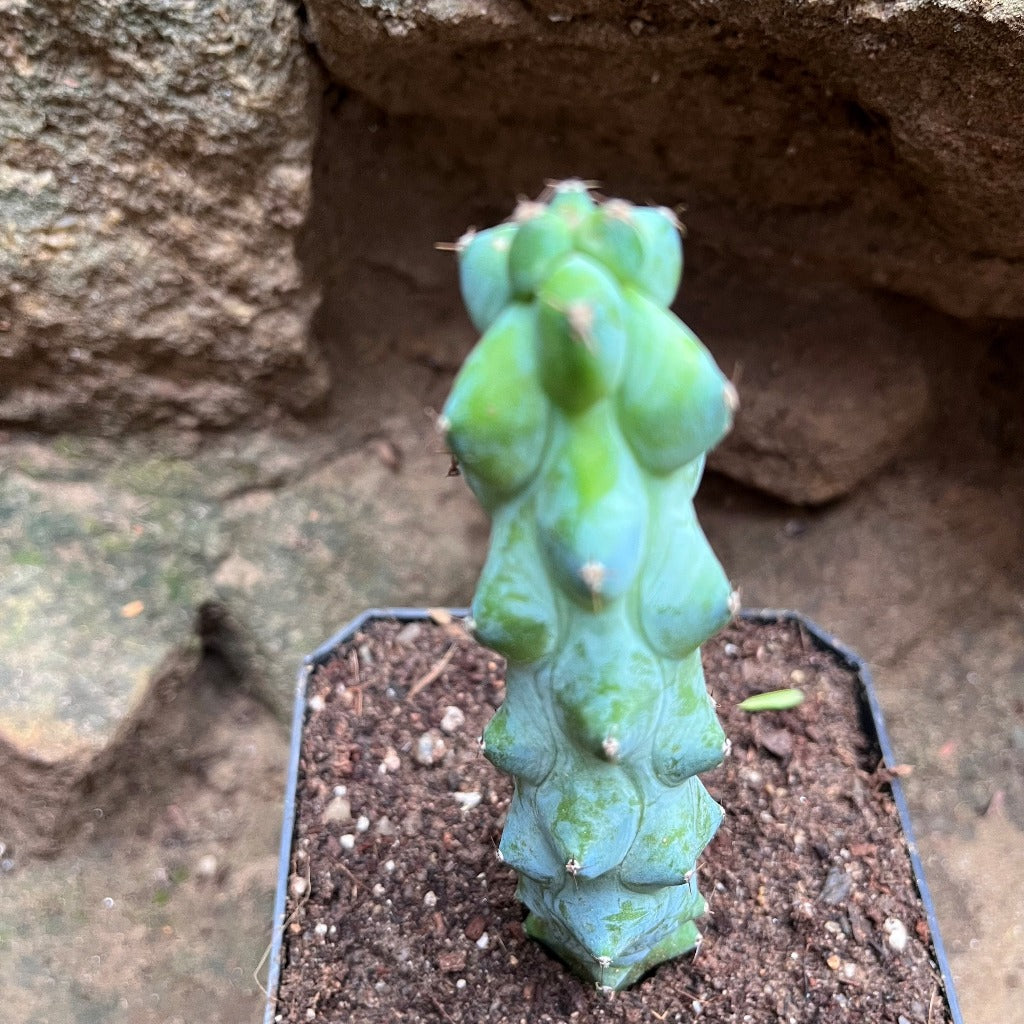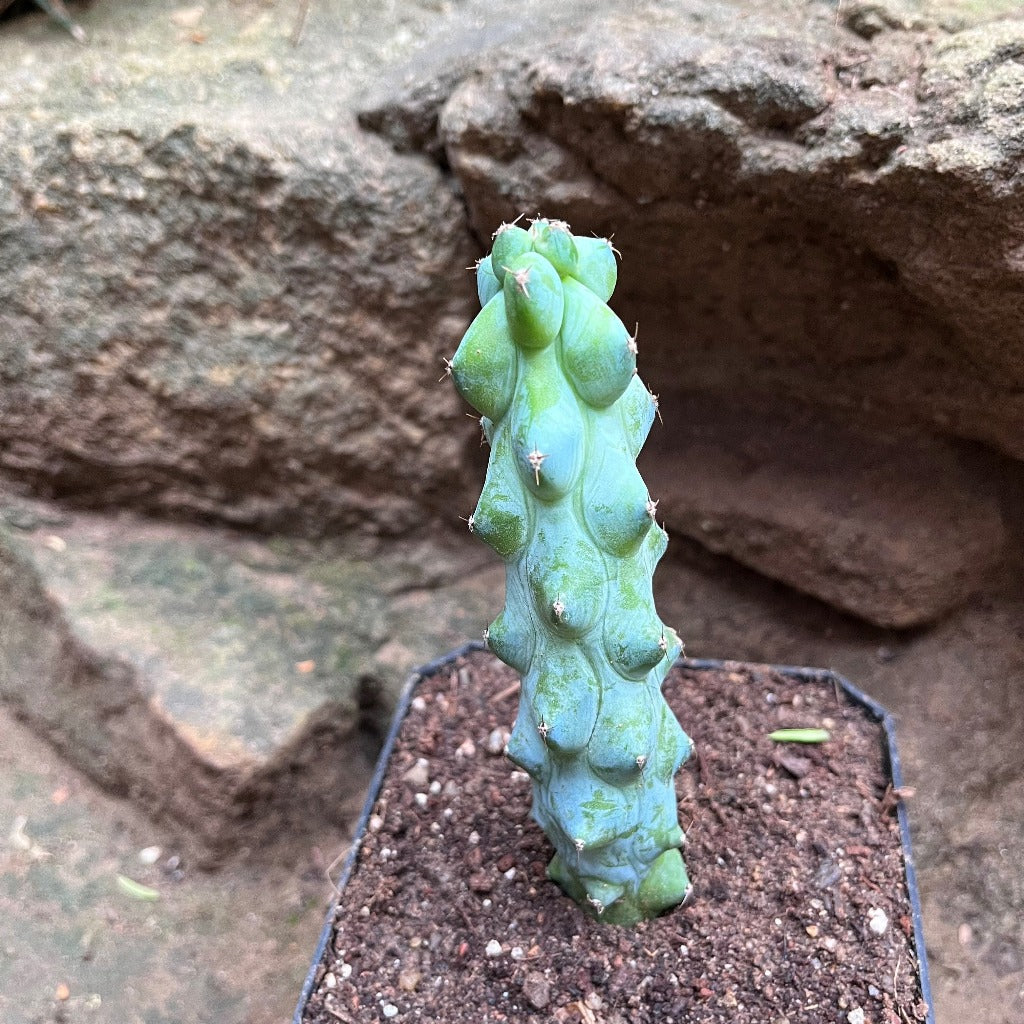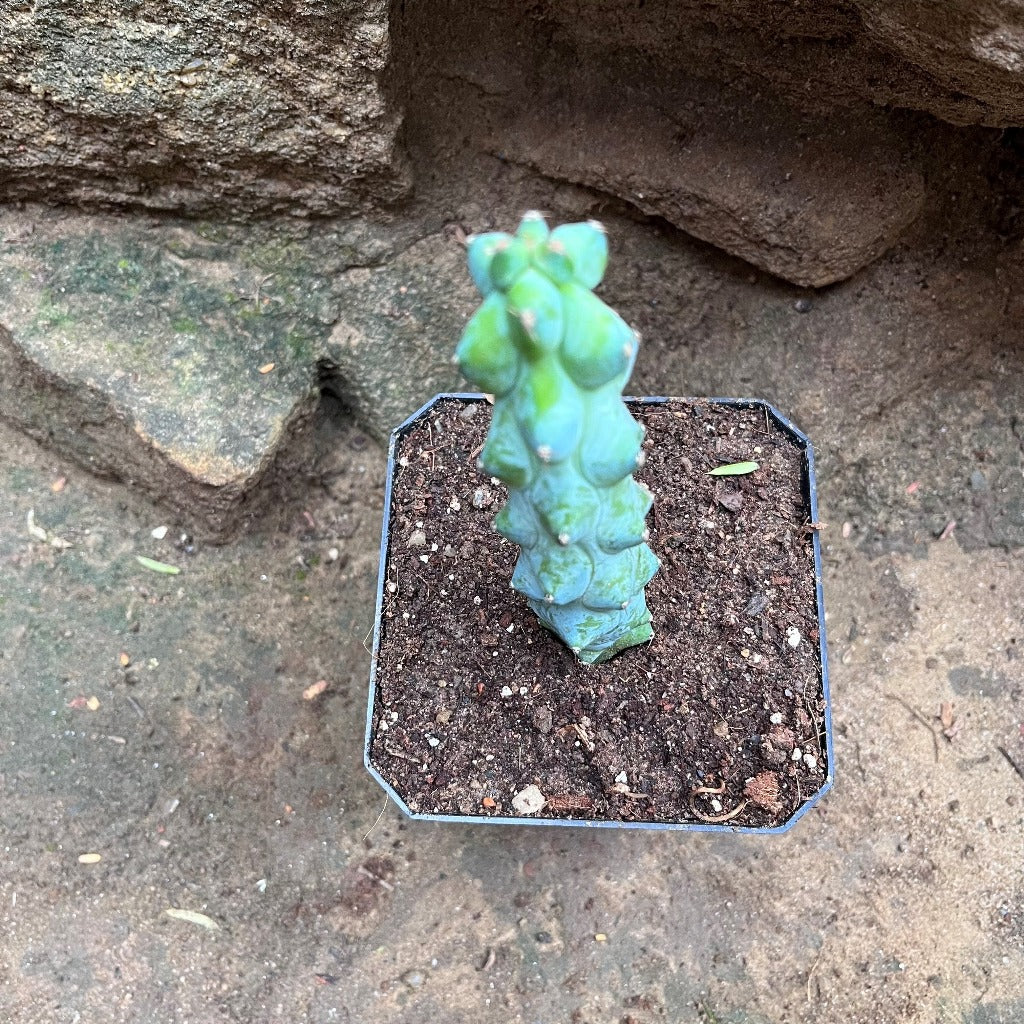Blue myrtle cactus
Family
Cactacaea
Native
Mexico
Description
The standard Myrtillocactus geometrizans (a.k.a "Blue Candle Cactus") is a very popular candelabra-like tree cactus. Instead the Japanese cultivar 'Fukurokuryuzinboku' is a strange monstrous form and a very rare and priced collector item. Its vernacular English names "Breast cactus" or "Titty cactus" comes from the particular shape of the tubercled ribs that resemble women breasts. This plant - apart from the breasts - is similar in all other features to the common "Blue Candle" and can grow up to 4.5 m tall, with the crown reaching up to 5 m in width.
Blue Candle Cactus is known for its pale green-colored flowers, 2–2.5 cm diameter, that bloom best in the mid-spring season.
Environment
Myrtillocactus Geometrizans is a desert plant, which means that it’s used to drastic changes in temperature throughout the day. They are semi hardy, make sure that Myrtillocactus are not exposed to temperatures below -4°C or they may die, nevertheless it is a good advice never let the night times temperatures fall below 10°C.
The light requirements for Myrtillocactus Geometrizans vary depending on the plant’s age and the time of the year. Younger plants prefer growing in partial shade or filtered sunlight. If you have a mature cactus, you can place it in direct sunlight. This plant is ideal for growing on window sills, especially if you have a room with southern or western exposure.
Water regularly in summer but allow to dry fully before watering again. Need a well-drained soil mix with small gravel added to ensure drainage.. During the winter months they should be rather kept dry and water is restricted to only enough to keep the stems and branches from shrivelling.
Since they are big sized plants need plenty of space for their roots, repotting should be done every other year or when the plant has outgrown its pot. Exposure: Light shade when young, full sun later.
The Myrtillocactus Geometrizans cactus is not a heavy feeder. It has very little need for fertilizers. You can use a diluted fertilizer solution to boost its growth during spring and summer but cut back on feeding while the plant is hibernating. Monthly applications of a fertilizer with a nutrient ratio of 5-10-5 are ideal.
Landscape Uses
Usually these are outdoor plant, grass lands, landscapes.






















